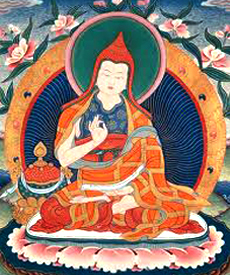 Sanskrit Didactic poetry can be dated back to the eighth century. There is less evidence of the early didactic poetry. Shantideva`s Bodhicharyavatara is one of the most distinguished efforts known in this regard. Some of the poems are ascribed to Shankara. The Catacloki which has 101 verses sets out with rich imagery the principles of the Vedanta. The Mohamudgara with its elaborate rhyming makes it more lyrical than didactic.
Sanskrit Didactic poetry can be dated back to the eighth century. There is less evidence of the early didactic poetry. Shantideva`s Bodhicharyavatara is one of the most distinguished efforts known in this regard. Some of the poems are ascribed to Shankara. The Catacloki which has 101 verses sets out with rich imagery the principles of the Vedanta. The Mohamudgara with its elaborate rhyming makes it more lyrical than didactic.
Some poetic merit is also attributed to Crhgarajtidnanirnaya which gives a contest between the claims of love and of knowledge in thirty-two stanzas. The author and date is unknown. The early treatise on Indian pornography, the Kuttammata is one the examples of didactic poetry that was written in the late eighth century. The style of the author is simple but not clumsy.
Kshemendra wrote his Samayamdarka, which perhaps means ` mother by convention.` Another work of Kshemendra is the Kalavilasa which is composed in ten sections discourses of the various occupations and foolery of mankind. Muladeva is the hero. A curious modernity in Kshemendra`s pictures is clearly seen. The Darpadalana which is written in seven sections is aimed to show the folly of pride. Each section begins with some gnomic sentences and thereby follows a tale in which the leading character delivers a long speech.
The Sevyasevakopadega has been written in sixty-one stanzas is a text of advice regarding servants and their masters. The Chaturvargasaihgraha gives a description of the four ends of life, morality, practical life, love and release. Charucharyagataka is a hundred verses laying down the rules of good behaviour, illustrating them by giving references to myths and tales. Kshemendra`s also influenced the Mugdhopade‡a of Jalhana which is a warning in sixty-six stanzas against the wiles of hetairai. Ksemendra employed a simple style.
Amitagati`s Subhdsitaratnasamdoha, `Collection of Jewels of Happy Sayings,` was written in 994 and his Dharmapariksa was penned around twenty years later. The former work has been written in thirty-two chapters. It has been written in one metre. It touches on the various aspects of Jain ethics, with an obvious controversial attitude towards Brahmanical practices.
More important is Hemchandra`s Yogashastra has been written in simple cloaks along with his own commentary in an elaborate prose. The first four chapters give a clear account of Jain philosophy, the last eight deals with the various duties and austere practices of Jainism. From this view point more emphasis is attached to the elaborate Crhgdravairdgyatarangini which is composed in forty-six stanzas, disapproving female love by Somaprabha (1276).



















